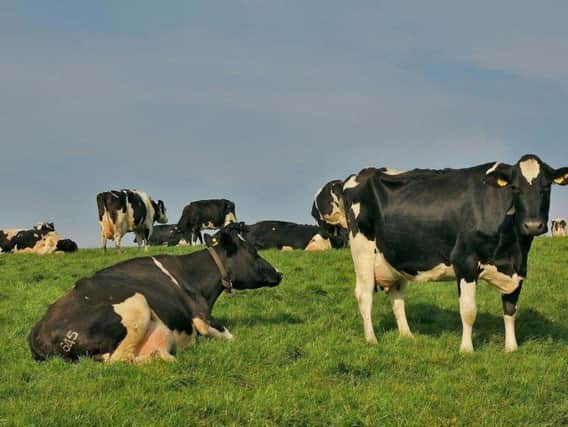Dealing with high temperatures and poor grass growth


The ‘GrassCheck Bulletin’ for week commencing 2 July 2018 shows growth at 40.4kg DM/Ha/day. This is well below the previous 10 year average for grass growth.
It is important to note this loss of dry matter at close to the peak growth period poses a risk of potential forage scarcity on some farms this winter. This is due to forage stocks having been largely depleted, as a result of the wet late summer/autumn 2017 and the late spring.
Advertisement
Advertisement
Hence the need to start planning through trying to source the best value for money dry matter that is practical to feed on the farm, either now or as conserved winter feed, if you assess your farm as being short of conserved fodder.
Practical advice that can be considered is highlighted as follows:
q As in any forage scarcity, target the best forage to the most productive animals on the farm. Young stock can be fed outside with poorer quality feeds and supplemented with purchased fibre sources – such as soya hulls, nutritionally improved straw, purchased hay (and availability is currently good) or straw.
q If a grazing dairy herd is to be housed for 12 hours out of every 24, consider housing cows during the day to avoid heat stress and allow more active grazing by night.
Advertisement
Advertisement
q Ensure cows have access to enough clean water. If troughs are empty or cows are congregating around drinkers, add in additional drinking sites. Cows will drink 14 litres per minutes, for your herd size does water flow rate and trough space allow this to happen?
q Continue to sow fertiliser on the grazing rotation. This can be sowed ahead of the cows on paddocks to allow for more moisture in the sward at sowing. If fertiliser is still visible on the top of the ground from the last application – then discontinue sowing.
q Pre-cutting of grazing paddocks in this weather can lead to very high dry matter grass and will mean that cows will drink additional water.
q Adjust concentrate supplementation rates to take account of your forage situation. M+ rates in computerised milking parlours should be reduced based on grass supply and forage supplementation.
Advertisement
Advertisement
q Maintenance requirements increase as livestock try to reduce body temperature so again adjust M+.
q Bring additional grazing area into the rotation to stretch grazing intervals (where there is still sufficient growth) and avoid grazing very low covers in short rotations – where grass growth allows. Average growth rates of 40kgDM/Ha can be used as a rule of thumb at present. For full time grazing offering 15kg DM/Ha/day, then the current grazing platform stocking rate will need to be under 3 cows/hectare.
q Topping should be discontinued so that there is some cover on paddocks which may help to shade new re growth.
q Dry cows off early at the end of lactation and remove them from the grazing platform.
Advertisement
Advertisement
q Sell surplus stock - cows that have been ear marked for culling, surplus young stock or beef animals.
q Irrigating grassland may require a water abstraction licence. It takes 55,500 gallons applied per hectare to be equivalent to 2.5cm of rain.
q In fully housed herds, ensure adequate ventilation in sheds to keeps cows cool. Consider adding in fans where necessary. Misting cows with a fine water spray at the feed rail can help to avoid heat stress – but this should be used with caution so that high volumes of water are not wasted.
q Feed mixed rations twice per day in warm weather to fully housed cows to ensure silage remains fresh.
Advertisement
Advertisement
q Continually monitor milk yields, dry matter intakes, concentrate feed levels and oestrus behaviour. This allows all aspects of the herd to be closely monitored. If changes are required to address issues, then make them quickly to maintain milk yields and herd profitability.
q On farms where grass growth is much reduced, source additional forage locally or purchase fodder replacement type rations. Compare value for money based on dry matter, energy and protein content. Whole crop cereals purchased from arable farmers will be a possibility over the next few weeks.
q Half grass demand by feeding 6-8kg DMI of silage and work with 12 hour grazing blocks so ensuring the maximum amount of time for regrowth.
q Slurry should only be applied with care in extremely dry conditions. Light coatings of watery slurry should be applied with trailing shoe/hose if possible. This can be done when there is some grass cover rather than applying to recently cut swards.
q Continually monitor the situation and take action early.